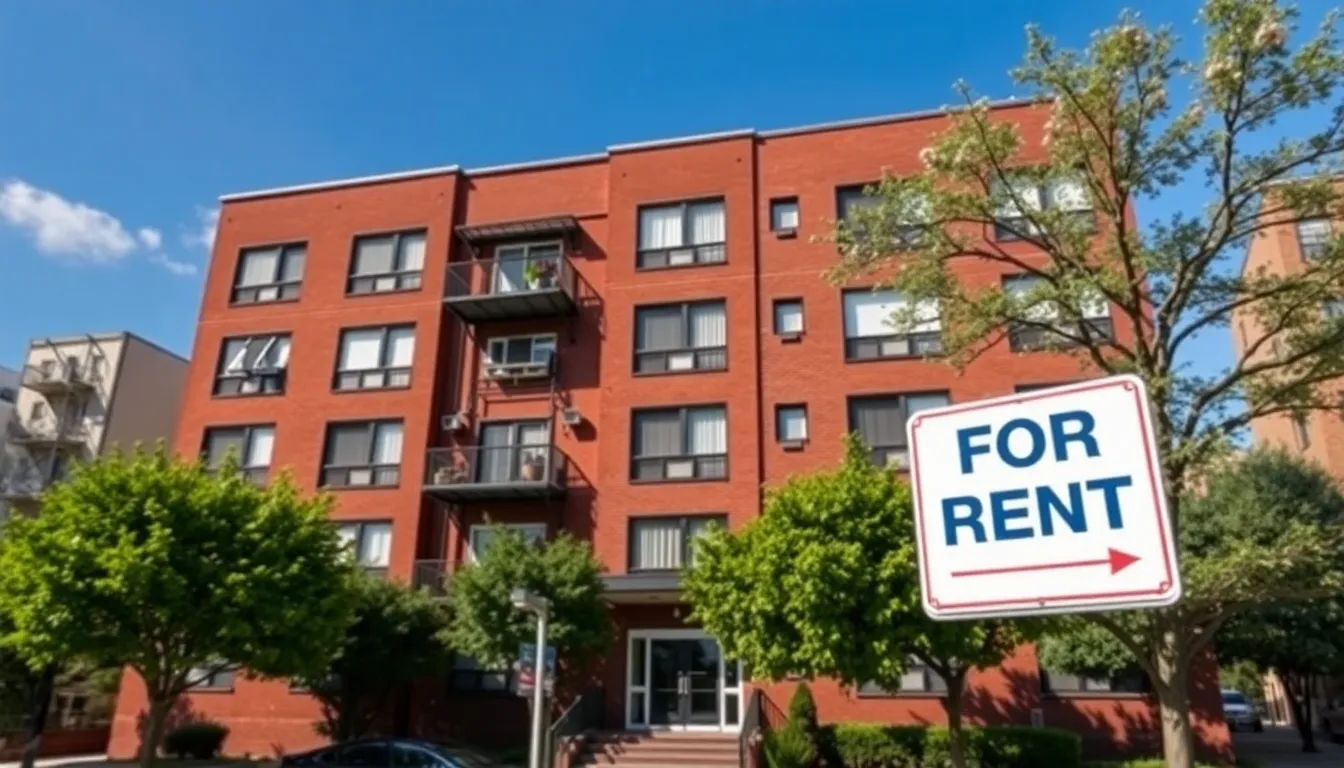As interest rates dance their way up and down like a caffeinated squirrel, renters everywhere are left scratching their heads. Is it the right time to sign that lease or should they wait for the market to cool off? With rent hikes looming like an unexpected surprise party, understanding the relationship between interest rates and rental prices becomes crucial.
Picture this: you’re trying to budget for your monthly expenses while the landlord’s raising rent faster than your favorite pizza joint’s prices. It’s a real-life game of financial dodgeball. Knowing how interest rates influence rental costs can save renters from getting hit hard in the wallet. Let’s dive into this whirlwind of numbers and see how they affect the cozy nest you call home.
Table of Contents
ToggleUnderstanding Interest Rates
Interest rates represent the cost of borrowing money. They play a significant role in the financial landscape, influencing various economic activities.
What Are Interest Rates?
Interest rates are percentages borrowers pay lenders for using borrowed funds. Central banks, like the Federal Reserve in the U.S., set benchmark rates that influence overall borrowing costs. Individual lenders may adjust their rates based on the risk factors associated with the borrower or the loans themselves. For example, higher credit risk can lead to elevated interest rates for personal loans or mortgages. Consumers often experience this through fluctuating rates on credit cards, student loans, and home mortgages.
How Interest Rates Affect the Economy
Economic stability often hinges on interest rates. When rates are low, borrowing becomes cheaper, encouraging consumers to spend and invest. Increased spending can stimulate higher demand for goods and services, which ultimately boosts overall economic growth. In contrast, high-interest rates tend to slow economic activity, as borrowing costs rise and consumers reduce spending. The housing market particularly feels these effects, where higher rates may cool down home purchases and make rentals more appealing. Understanding this relationship helps renters anticipate potential changes in rent costs based on interest rate fluctuations.
The Dynamics of Rent Hikes
Rent hikes reflect various economic factors, including interest rates and inflation. Understanding these dynamics empowers renters to navigate their choices.
Factors Influencing Rent Increases
Market demand plays a crucial role in driving rent increases. When more people seek rental properties, landlords often raise prices. Location has a significant impact as well; desirable neighborhoods attract higher rents. Property maintenance can influence costs, as well-kept units justify increased charges. Additionally, local economic conditions affect rental trends; new businesses entering a region may spike demand. Regulatory changes, such as rent control laws, also shape the rental landscape, indirectly influencing landlords’ pricing strategies.
The Impact of Inflation on Rental Prices
Inflation leads to an increase in the cost of living, affecting rental pricing. As inflation rises, landlords typically raise rents to cover higher expenses like property maintenance and utilities. Cost-push inflation results from increased costs of materials essential for maintaining rental properties, further driving up rents. The purchasing power of consumers diminishes during high inflation periods, which can limit renters’ ability to afford rising rental rates. Evaluating inflationary trends assists renters in anticipating future rent hikes and budgeting accordingly.
Interest Rates vs Rent Hikes: The Relationship
Navigating the relationship between interest rates and rent hikes proves essential for understanding rental market dynamics. Fluctuating interest rates significantly impact rental prices.
How Rising Interest Rates Impact Rental Markets
Rising interest rates generally lead to higher borrowing costs for potential homebuyers. Expensive mortgages increase the appeal of renting as an alternative housing option. Renters may notice a consequent increase in demand for rental properties, pushing landlords to raise prices. Increased expenses for landlords often result from higher mortgage payments on investment properties. Observing these trends shows how interest rate hikes can drive rental costs upward, influencing overall market stability.
Historical Trends in Interest Rates and Rent Prices
Historical data reveal a strong correlation between interest rates and rent prices. During periods of low interest rates, rental prices tend to stay relatively stable or even decline. Higher rental demand often emerges when mortgage costs fall, as more individuals opt for homeownership. Conversely, when interest rates climb, rental prices often rise due to increased operational costs for landlords. Examining past decades shows that significant rate increases commonly precede noticeable rent hikes, illustrating a recurring pattern in market behavior.
Strategies for Renters and Landlords
Managing rental situations requires adaptability from both renters and landlords. Understanding market trends can make a significant difference in navigating rent hikes and interest rate fluctuations.
Advice for Renters Facing Hikes
Evaluate lease agreements thoroughly. Renters should compare current rental prices with recent market data. Consider negotiating lease terms with landlords based on comparable rents in the neighborhood. Track local economic conditions to anticipate changes. When applicable, request longer lease terms to lock in current rates, as fluctuations often favor landlords during uncertain economic times. Remain informed about any available tenant protections or rent control regulations that may apply in your area.
Tips for Landlords in a Changing Market
Adjust pricing strategies as necessary. Landlords must evaluate the local rental market consistently to ensure competitive pricing. Maintain properties to meet tenant expectations and attract quality renters. Communicate transparently with tenants about potential changes in pricing, providing reasons for any adjustments. Utilize data on local economic trends to make informed decisions regarding rent increases. Finally, consider offering incentives such as reduced deposits or flexible lease terms to retain current tenants, keeping vacancy rates low.
Conclusion
Navigating the relationship between interest rates and rent hikes is crucial for renters looking to make informed decisions. As interest rates fluctuate they create a ripple effect on rental prices that can significantly impact budgets. Renters who stay informed about these economic trends can better anticipate potential rent increases and adjust their financial strategies accordingly.
By understanding how interest rates influence the rental market renters can make smarter choices about when to sign leases or negotiate terms. Ultimately staying proactive and informed is key to managing rental costs in an ever-changing economic landscape.







